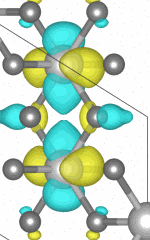Singlet insulators - effects caused by intersite correlations

Aside from the onsite interactions, if the intersite correlations in a material are strong enough, the material can start forming hybridized molecular-orbital-like states that lie between the atoms. This can cause the material to become a so-called singlet insulator, in which the previously free electrons get bound and cannot conduct anymore.
One of the most famous materials falling into this category is vanadium dioxide, VO2, where we observe a strong interplay of intersite interactions with a structural change in the material. This causes a metal-insulator transition to occur which makes VO2 an extremely interesting material from both its physics standpoint and form its potential for industrial applications such as in neuromorphic computing. The tuning of this transition by external factors such as strain or doping is hence of particular interest which we have started to investigate through the study of Ge-doping of the compound [1].
Due to the singlet states present in VO2, we study the material using a unique set of bond-centered orbitals [2].
- P. Mlkvik, C. Ederer, and N.A. Spaldin, external pageInfluence of germanium substitution on the structural and electronic stability of the competing vanadium dioxide phasescall_made, Phys. Rev. Res. 4, 043129 (2022).
- P. Mlkvik, M.E. Merkel, N.A. Spaldin, and C. Ederer, Single-site DFT+DMFT for vanadium dioxide using bond-centered orbitals, In preparation (2024).
